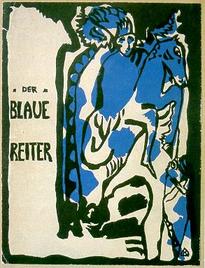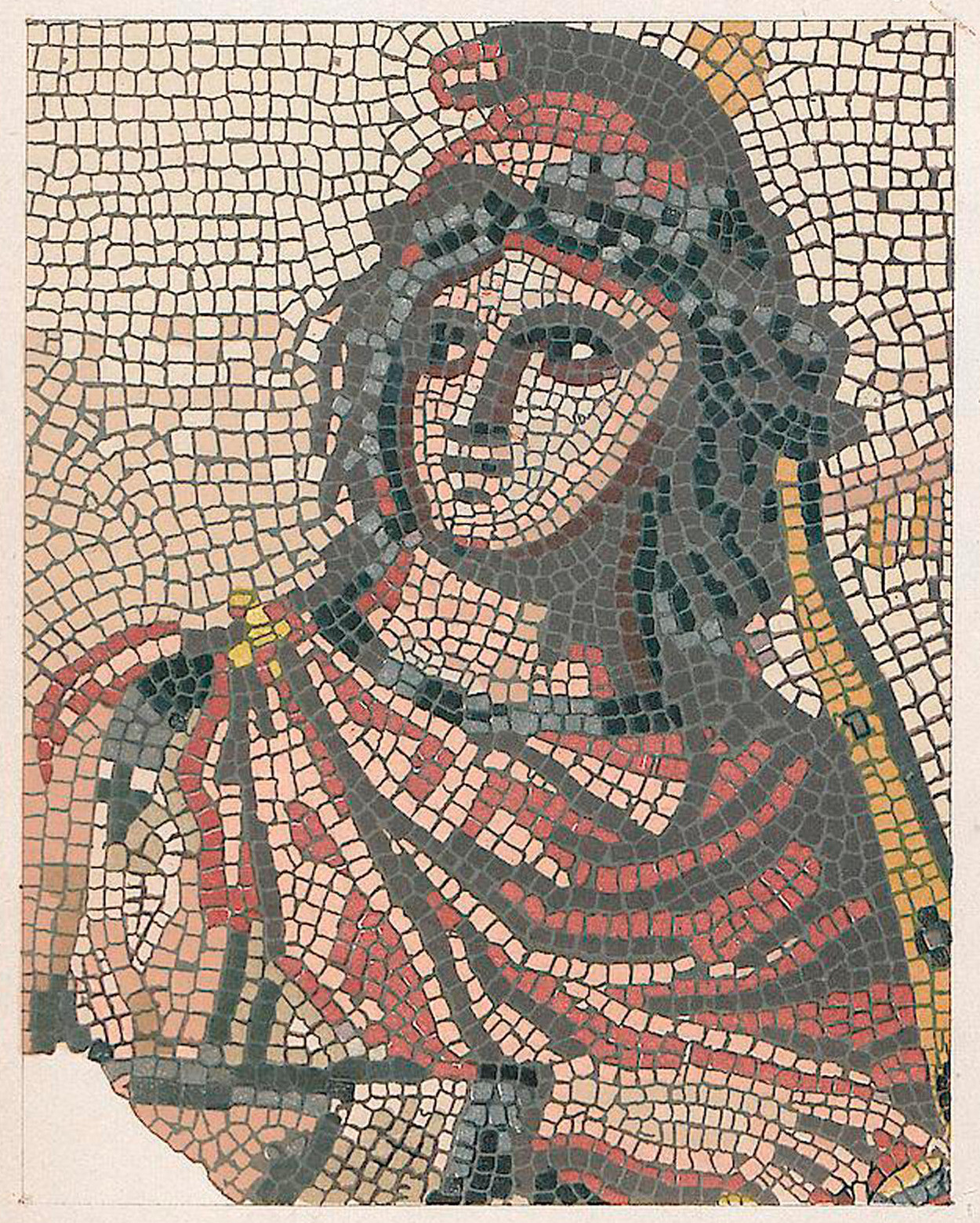|
Orphism (art)
Orphism or Orphic Cubism, a term coined by the French poet Guillaume Apollinaire in 1912, was an offshoot of Cubism that focused on pure abstraction and bright colors, influenced by Fauvism, the theoretical writings of Paul Signac, Charles Henry and the dye chemist Michel Eugène Chevreul. This movement, perceived as key in the transition from Cubism to Abstract art, was pioneered by František Kupka, Robert Delaunay and Sonia Delaunay, who relaunched the use of color during the monochromatic phase of Cubism. The meaning of the term Orphism was elusive when it first appeared and remains to some extent vague. History The Orphists were rooted in Cubism but tended towards a pure lyrical abstraction. They saw art as the unification of sensation and color. More concerned with sensation, they began with recognizable subjects, depicted with abstract structures. Orphism aimed to vacate recognizable subject matter by concentrating exclusively on ''form'' and ''color''. The movement ... [...More Info...] [...Related Items...] OR: [Wikipedia] [Google] [Baidu] |
Gino Severini
Gino Severini (7 April 1883 – 26 February 1966) was an Italian Painting, painter and a leading member of the Futurism (art), Futurist movement. For much of his life he divided his time between Paris and Rome. He was associated with neo-classicism and the "return to order" in the decade after the First World War. During his career he worked in a variety of media, including mosaic and fresco. He showed his work at major exhibitions, including the Rome Quadrennial, and won art prizes from major institutions. Early life Severini was born into a poor family in Cortona, Italy. His father was a junior court official and his mother a dressmaker. He studied at the Scuola Tecnica in Cortona until the age of fifteen, when he and a group of fellow-classmates were expelled from the entire Italian school system for the attempted theft of exam papers. The boys escaped a custodial sentence but Severini never again attended formal education. For a while he worked with his father; then in 1899 ... [...More Info...] [...Related Items...] OR: [Wikipedia] [Google] [Baidu] |
Blaue Reiter
''Der Blaue Reiter'' (''The Blue Rider'') was a group of artists and a designation by Wassily Kandinsky and Franz Marc for their exhibition and publication activities, in which both artists acted as sole editors in the almanac of the same name (first published in mid-May 1912). The editorial team organized two exhibitions in Munich in 1911 and 1912 to demonstrate their art-theoretical ideas based on the works of art exhibited. Traveling exhibitions in German and other European cities followed. ''The Blue Rider'' disbanded at the start of World War I in 1914. The artists associated with ''Der Blaue Reiter'' were important pioneers of modern art of the 20th century; they formed a loose network of relationships, but not an art group in the narrower sense like Die Brücke (The Bridge) in Dresden. The work of the affiliated artists is assigned to German Expressionism. History The forerunner of ''The Blue Rider'' was the Neue Künstlervereinigung München (N.K.V.M: New Artists' ... [...More Info...] [...Related Items...] OR: [Wikipedia] [Google] [Baidu] |
Wassily Kandinsky
Wassily Wassilyevich Kandinsky ( – 13 December 1944) was a Russian painter and art theorist. Kandinsky is generally credited as one of the pioneers of abstract art, abstraction in western art. Born in Moscow, he spent his childhood in Odessa, where he graduated from Grekov Odesa Art School, Odessa Art School. He enrolled at the University of Moscow, studying law and economics. Successful in his profession, he was offered a professorship (chair of Roman Law) at the University of Tartu, University of Dorpat (today Tartu, Estonia). Kandinsky began painting studies (life-drawing, sketching and anatomy) at the age of 30. In 1896, Kandinsky settled in Munich, studying first at Anton Ažbe's private school and then at the Academy of Fine Arts, Munich, Academy of Fine Arts. During this time, he was first the teacher and then the partner of German artist Gabriele Münter. He returned to Moscow in 1914 after the outbreak of World War I. Following the Russian Revolution, Kand ... [...More Info...] [...Related Items...] OR: [Wikipedia] [Google] [Baidu] |
Francis Picabia
Francis Picabia (: born Francis-Marie Martinez de Picabia; 22January 1879 – 30November 1953) was a French avant-garde painter, writer, filmmaker, magazine publisher, poet, and typography, typographist closely associated with Dada. When considering the many styles that Picabia painted in, observers have described his career as "shape-shifting" or "kaleidoscopic". After experimenting with Impressionism and Pointillism, Picabia became associated with Cubism. His highly Abstract art, abstract planar compositions were colourful and rich in contrasts. He was one of the early major figures of the Dada movement in the United States and in France before denouncing it in 1921. He was later briefly associated with Surrealism, but would soon turn his back on the art establishment. Early life Francis Picabia was born in Paris of a French mother and a Cuban father of Spanish descent. Some sources would have his father as of aristocratic Spanish descent, whereas others consider him of ... [...More Info...] [...Related Items...] OR: [Wikipedia] [Google] [Baidu] |
The Cubist Painters, Aesthetic Meditations
''Les Peintres Cubistes, Méditations Esthétiques'' (English, ''The Cubist Painters, Aesthetic Meditations''), is a book written by Guillaume Apollinaire between 1905 and 1912, published in 1913. This was the third major text on Cubism; following ''Du "Cubisme"'' by Albert Gleizes and Jean Metzinger (1912);Albert Gleizes and Jean Metzinger, ''Du "Cubisme"'', published by Eugène Figuière Éditeurs, Paris, 1912 (Eng. trans., London, 1913)Daniel Robbins, ''Jean Metzinger: At the Center of Cubism'', 1985, Jean Metzinger in Retrospect, The University of Iowa Museum of Art, J. Paul Getty Trust, University of Washington Press, pp. 9–23 and André Salmon, ''Histoire anecdotique du cubisme'' (1912).André Salmon, ''L'art vivant'', ''La Jeune Peinture française, Histoire anecdotique du cubisme'', (''Anecdotal History of Cubism''), Paris, Albert Messein, 1912, Collection des Trente. Translated in Mark Antliff and Patricia Leighten, ''A Cubism Reader, Documents and Criticism, 1906-1914'' ... [...More Info...] [...Related Items...] OR: [Wikipedia] [Google] [Baidu] |
Section D'Or
The Section d'Or ("Golden Section"), also known as Groupe de Puteaux or Puteaux Group, was a collective of painters, sculptors, poets and critics associated with Cubism and Orphism. Based in the Parisian suburbs, the group held regular meetings at the home of the Duchamp brothers in Puteaux and at the studio of Albert Gleizes in Courbevoie. Active from 1911 to around 1914, members of the collective came to prominence in the wake of their controversial showing at the Salon des Indépendants in the spring of 1911. This showing by Albert Gleizes, Jean Metzinger, Robert Delaunay, Henri le Fauconnier, Fernand Léger and Marie Laurencin (at the request of Apollinaire), created a scandal that brought Cubism to the attention of the general public for the first time. The Salon de la Section d'Or, held October 1912—the largest and most important public showing of Cubist works prior to World War I—exposed Cubism to a wider audience still. After the war, with support given by the deal ... [...More Info...] [...Related Items...] OR: [Wikipedia] [Google] [Baidu] |
Sonia Delaunay, 1914, Prismes électriques, Oil On Canvas, 250 X 250 Cm, Musée National D'Art Moderne
Sonia, Sonja or Sonya, a name of Greek origin meaning wisdom, may refer to: People * Sonia (name), a feminine given name (lists people named, Sonia, Sonja and Sonya) :* Sonia (actress), Indian film actress in Malayalam and Tamil films :* Sonia (singer), British pop singer Sonia Evans :* Sonia, pen name of Ottavia Vitagliano (1894–1975), an Italian writer :* Sonia, code-name of Ursula Kuczynski, also known as Beurton, a spy for the USSR :*Queen Sonja of Norway (born 1937) :*Sonia Ben Ammar, French fashion model, actress and singer known mononymously as SONIA * Sonia people, an ethnic group on the Great Papuan Plateau of Papua New Guinea Other * Sonia, the allied code name for the Mitsubishi Ki-51, Japanese WW2 era bomber * SONIA, Sterling OverNight Index Average, a financial market rate * ''Sonia'' (album), a 1991 album by Sonia Evans * ''Sonia'' (1921 film), a British silent film * ''Sonia'' (1986 film), a Canadian drama film * ''Sonja'' (film), a 1943 Swedish film di ... [...More Info...] [...Related Items...] OR: [Wikipedia] [Google] [Baidu] |
Greek Mythology
Greek mythology is the body of myths originally told by the Ancient Greece, ancient Greeks, and a genre of ancient Greek folklore, today absorbed alongside Roman mythology into the broader designation of classical mythology. These stories concern the ancient Greek religion's view of the Cosmogony, origin and Cosmology#Metaphysical cosmology, nature of the world; the lives and activities of List of Greek deities, deities, Greek hero cult, heroes, and List of Greek mythological creatures, mythological creatures; and the origins and significance of the ancient Greeks' cult (religious practice), cult and ritual practices. Modern scholars study the myths to shed light on the religious and political institutions of ancient Greece, and to better understand the nature of mythmaking itself. The Greek myths were initially propagated in an oral tradition, oral-poetic tradition most likely by Minoan civilization, Minoan and Mycenaean Greece, Mycenaean singers starting in the 18th century&n ... [...More Info...] [...Related Items...] OR: [Wikipedia] [Google] [Baidu] |
Orpheus
In Greek mythology, Orpheus (; , classical pronunciation: ) was a Thracians, Thracian bard, legendary musician and prophet. He was also a renowned Ancient Greek poetry, poet and, according to legend, travelled with Jason and the Argonauts in search of the Golden Fleece, and descended into the Greek underworld, underworld to recover his lost wife, Eurydice. The major stories about him are centered on his ability to charm all living things and even stones with his music (the usual scene in Orpheus mosaics), his attempt to retrieve his wife Eurydice from the underworld, and his death at the hands of the maenads of Dionysus, who got tired of his mourning for his late wife Eurydice. As an archetype of the inspired singer, Orpheus is one of the most significant figures in the classical reception studies, reception of classical mythology in Western culture, portrayed or allusion, alluded to in countless forms of art and popular culture including poetry, film, opera, music, and painting ... [...More Info...] [...Related Items...] OR: [Wikipedia] [Google] [Baidu] |
Delaunay
Delaunay is a French surname. Notable people with the surname include: People Arts * Catherine Delaunay (born 1969), French jazz clarinet player and composer * Charles Delaunay (1911–1988), French author and jazz expert * Constance Delaunay (1922-2013), French translator, playwright, novelist and short stories writer * Jules-Élie Delaunay (1828–1891), French painter * Louis Arsene Delaunay (1826–1903), French actor * Robert Delaunay (1885–1941), French artist * Rose Delaunay (1857–after 1937), French opera ainger * Sonia Delaunay (1885–1979), Ukrainian-French artist * Vadim Delaunay (1947–1983), Russian poet and dissident Football * Henri Delaunay (1883–1955), French football administrator * Jean-Pierre Delaunay (born 1966), French footballer * Pierre Delaunay, football administrator Science * Boris Delaunay (1890–1980), Soviet/Russian mathematician, inventor of Delaunay triangulation * Charles-Eugène Delaunay (1816–1872), French astronomer and mathematic ... [...More Info...] [...Related Items...] OR: [Wikipedia] [Google] [Baidu] |
Camille Pissarro
Jacob Abraham Camille Pissarro ( ; ; 10 July 1830 – 13 November 1903) was a Danish-French Impressionist and Neo-Impressionist painter born on the island of St Thomas (now in the US Virgin Islands, but then in the Danish West Indies). His importance resides in his contributions to both Impressionism and Post-Impressionism. Pissarro studied from great forerunners, including Gustave Courbet and Jean-Baptiste-Camille Corot. He later studied and worked alongside Georges Seurat and Paul Signac when he took on the Neo-Impressionist style at the age of 54. In 1873 he helped establish a collective society of fifteen aspiring artists, becoming the "pivotal" figure in holding the group together and encouraging the other members. Art historian John Rewald called Pissarro the "dean of the Impressionist painters", not only because he was the oldest of the group, but also "by virtue of his wisdom and his balanced, kind, and warmhearted personality". Paul Cézanne said "he was a fa ... [...More Info...] [...Related Items...] OR: [Wikipedia] [Google] [Baidu] |







